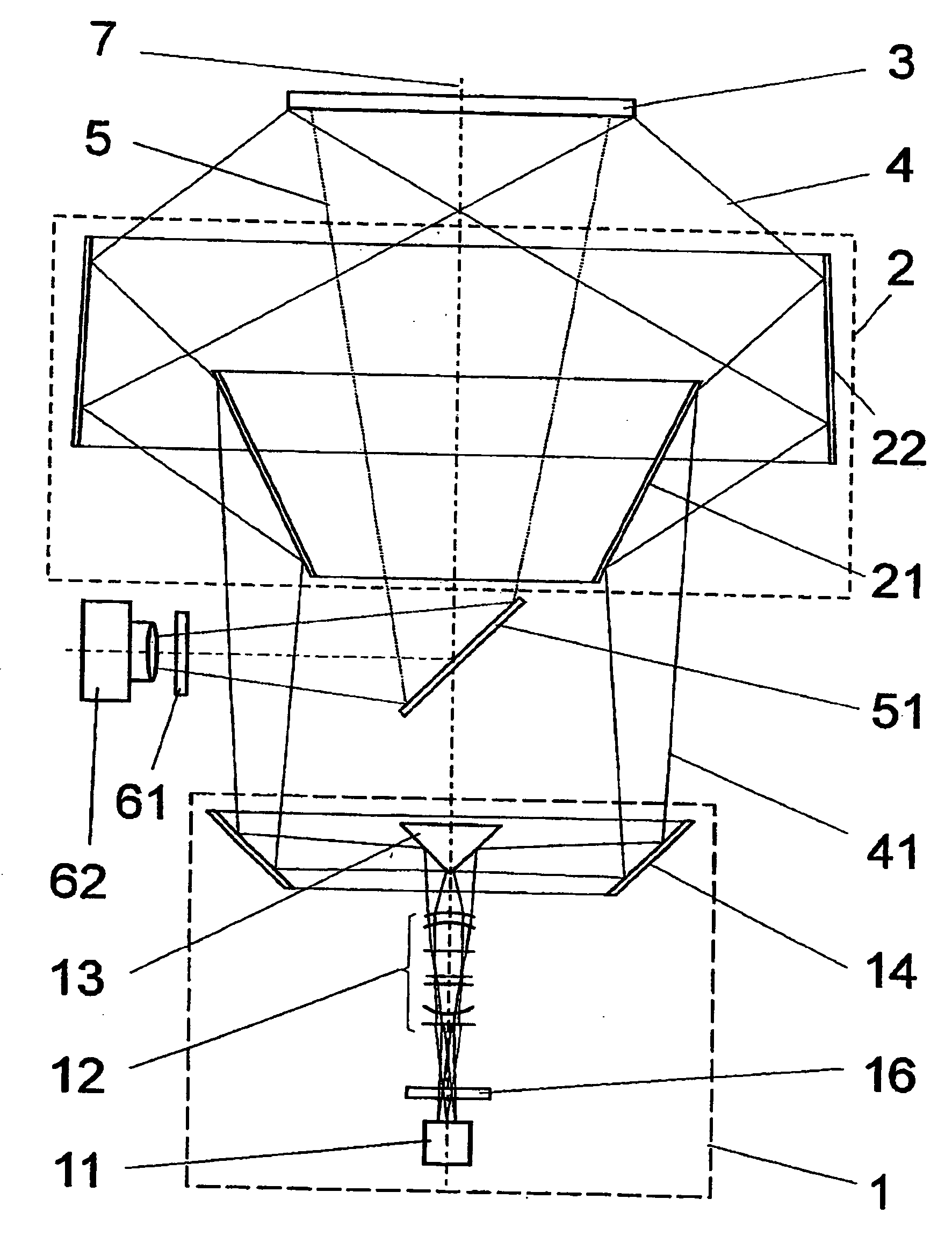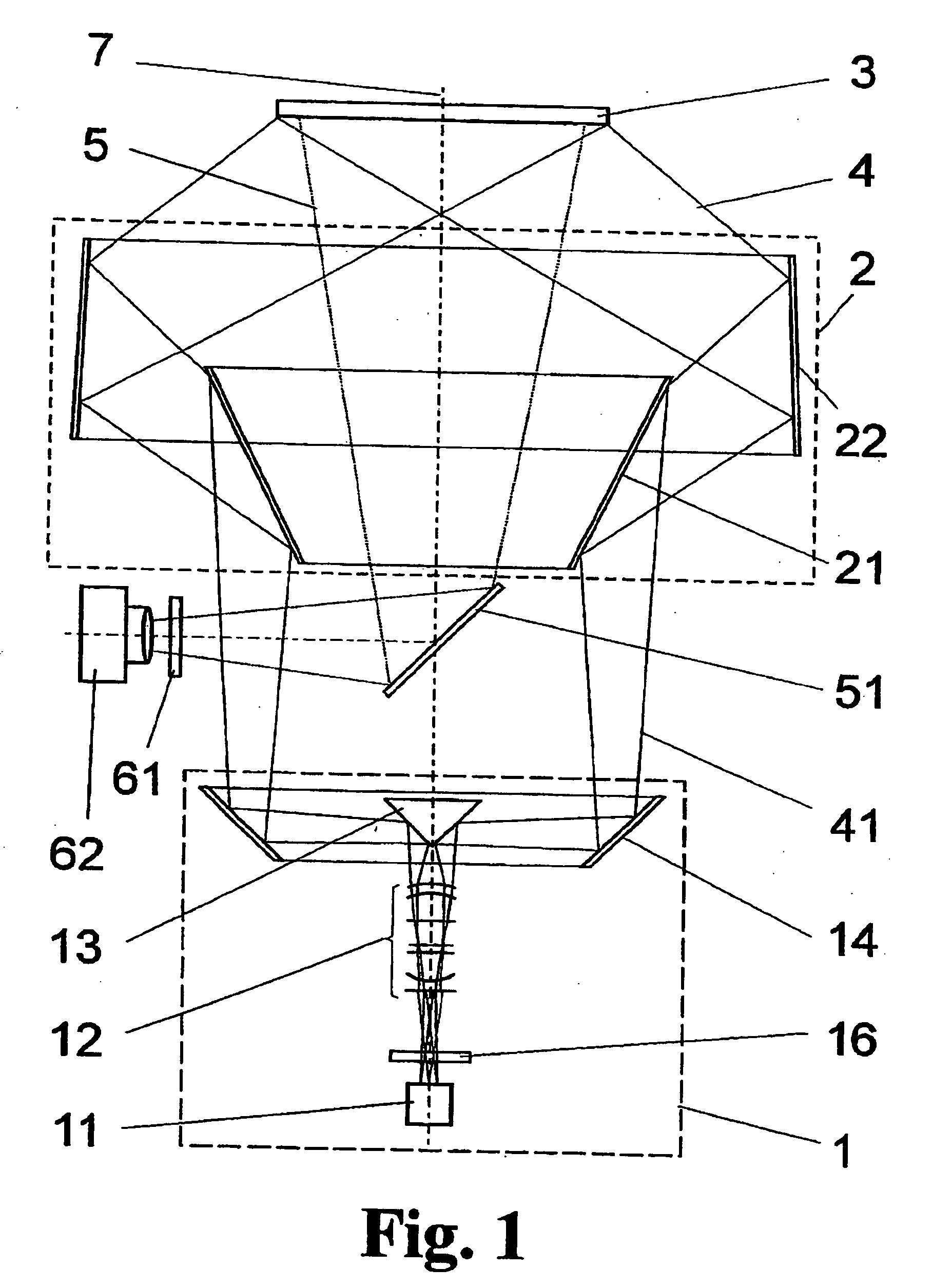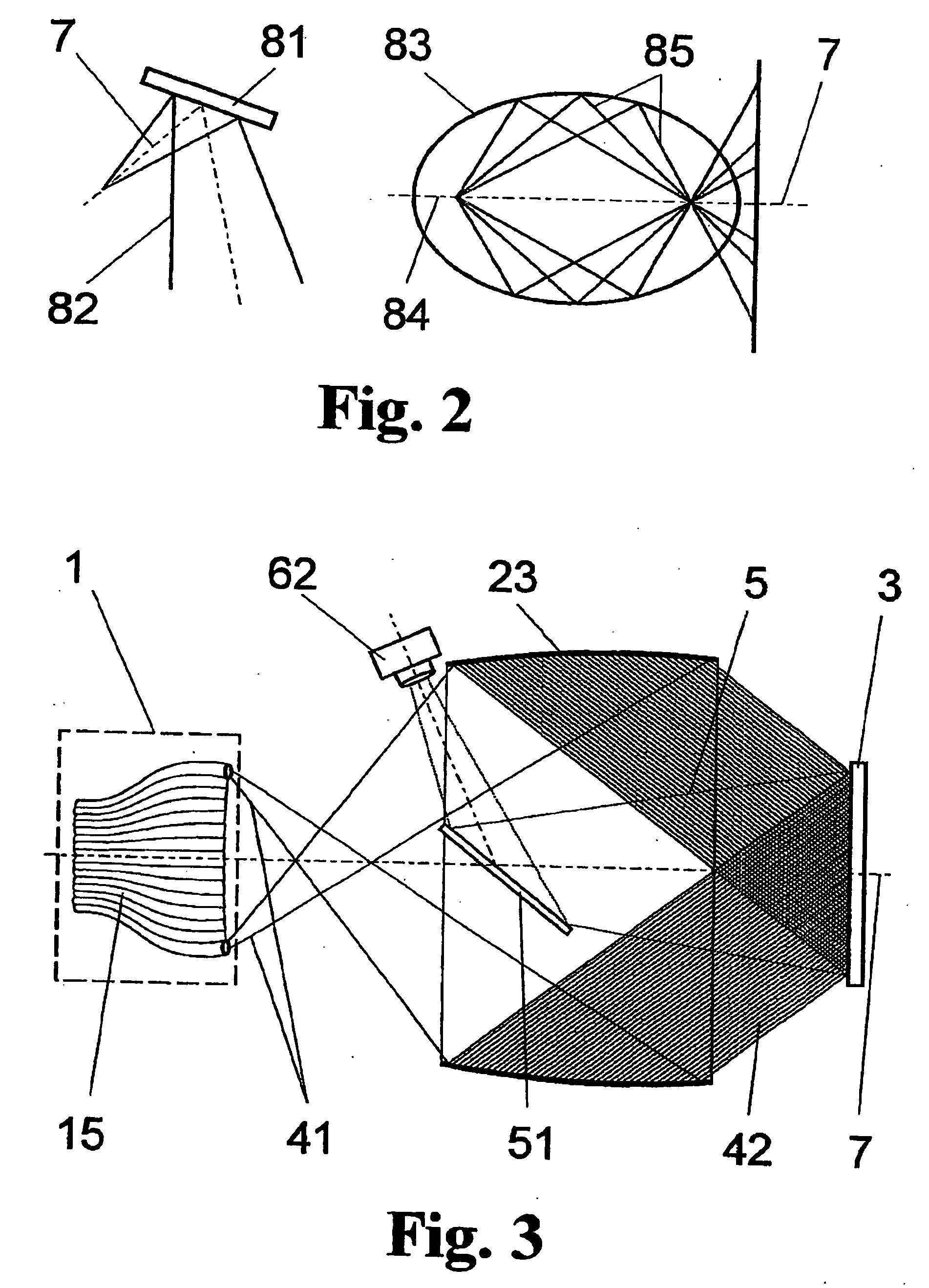Optical analytic measurement device for fluorescence measurements in multisample carriers
- Summary
- Abstract
- Description
- Claims
- Application Information
AI Technical Summary
Benefits of technology
Problems solved by technology
Method used
Image
Examples
application example
[0100] In an embodiment form of the invention, according to FIG. 6, using two (pulsed) light sources 11 with defined excitation wavelengths, a quantitative determination of determined ions, e.g., calcium, can also be undertaken as will be explained more precisely in the following example (Fura analysis).
[0101] In cell biology, the transient intracellular calcium concentration is of interest because it supplies information about the viability of a cell. The fluorescent dye, Fura III, makes it possible to quantify the concentration of calcium when excited at 340 nm and 380 nm and the emission is observed in each instance at 520 nm. The device shown in FIG. 6 is constructed in such a way that it also permits this Ca measurement. The requirements are met by two strobe lamps—adjusted to 340 nm and 380 nm, respectively—and camera observation at 520 nm. The quotient of the two signals which are measured roughly simultaneously represents the Ca concentration (when the signal remains consta...
PUM
 Login to View More
Login to View More Abstract
Description
Claims
Application Information
 Login to View More
Login to View More - R&D
- Intellectual Property
- Life Sciences
- Materials
- Tech Scout
- Unparalleled Data Quality
- Higher Quality Content
- 60% Fewer Hallucinations
Browse by: Latest US Patents, China's latest patents, Technical Efficacy Thesaurus, Application Domain, Technology Topic, Popular Technical Reports.
© 2025 PatSnap. All rights reserved.Legal|Privacy policy|Modern Slavery Act Transparency Statement|Sitemap|About US| Contact US: help@patsnap.com



